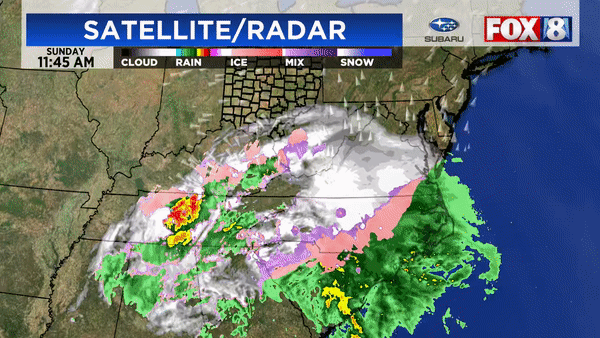The seeds of this huge snowstorm were first planted around Christmas. How is possible? We started noticing signs that the HUGE ridge of high pressure in the northern Pacific was starting to move after sitting still for most of December locking in the milder pattern across the eastern US.
Watch the big red blog move northwest into eastern Siberia and north of the Arctic Circle. Low pressure centers (blue areas on the left) then could moves off of eastern Asia east undercutting the moving ridge. These lows filled the void left by the departing high pressure ridge. This animation is from December 31 to January 5.
The overall upper level pattern starting flipping in the first week of January. Look at the lows across the Canadian/US border.
Animation below is from January 7 to the 14th shows a more centered view over North America. On the left side is the departing ridge (red blob). See how the low pressure centers in the northern Pacific between the Aleutian Island and Hawaii sit and build. Also notice that around January 10th a small low pressure "piece" was spun off north of Hawaii. This was steered into the Northwest US, strengthening as it moved southeast through the upper midwest. I circled it for reference.
On Wednesday January 12 (4-5 days before the event) the long range projections were latching onto the idea that this low in the upper mid-west was heading south through Missouri then back up along the Appalachian Mountains.
 |
| Snowfall from Wednesday January 12 through Sunday morning January 16 |
My first general snowfall outlook for significant snowfall was issued Thursday. These panhandle/eastern US snow systems historically have stayed east of northern Ohio even as computer models attempt to push them west with record setting snowfalls. I remember a long range model produce 30-35 inches of snow for half of Ohio in one instance! I was cautious to jump on the bandwagon.
What did the long range models say regarding snowfall on Wednesday, 4+ days before the snow event?
First the American Model:
Next the Canadian Model:
The European Model:
24 hours later (Late Thursday. 3+ days before the event):
There was a discernable shift in the heavy snow into Pennsylvania and along the Ohio/PA line south into the WV panhandle.
By Saturday morning, the model output showed the heaviest snow depth still along the Ohio/PA border by early Monday afternoon. I'm using weather.us model output maps here.
First the American model:
And the European:
The National Weather Service in Cleveland issued these winter weather advisories starting Saturday late afternoon.
Now Sunday morning's model output. First the longer range models (GFS and EURO) then the shorter term, higher resolution model output (NAM). Each one was showing a trend further west with the 12"+ snow amounts.
 |
| GFS |
 |
| EURO |
 |
| NAM |
NWS in Cleveland started to extend the advisories and warning further west.
The NWS continued to expand the advisory/warning areas further west Sunday evening.
The NWS snowfall forecast Sunday late afternoon/evening:
Our official FOX8 forecast from Sunday morning. Our western edge of 6-9" snow was close to I-71.
Our official FOX8 snowfall forecast issued Sunday evening. We shifted the heavier snowfall into Summit and parts of Cuyahoga Counties with the 9"+ snowfall edge near I-71.
The 12 inch snowfall forecast cut-off was shifted west slowly each day. The actual 12" amounts verified west by about 20 miles west of our final forecast
The storm prediction center highlighted heavy snow fall in their regional discussion Sunday late afternoon. Temperatures were between 25 and 30 degrees at sundown so the initial accumulations were more "sleety snow"
























































